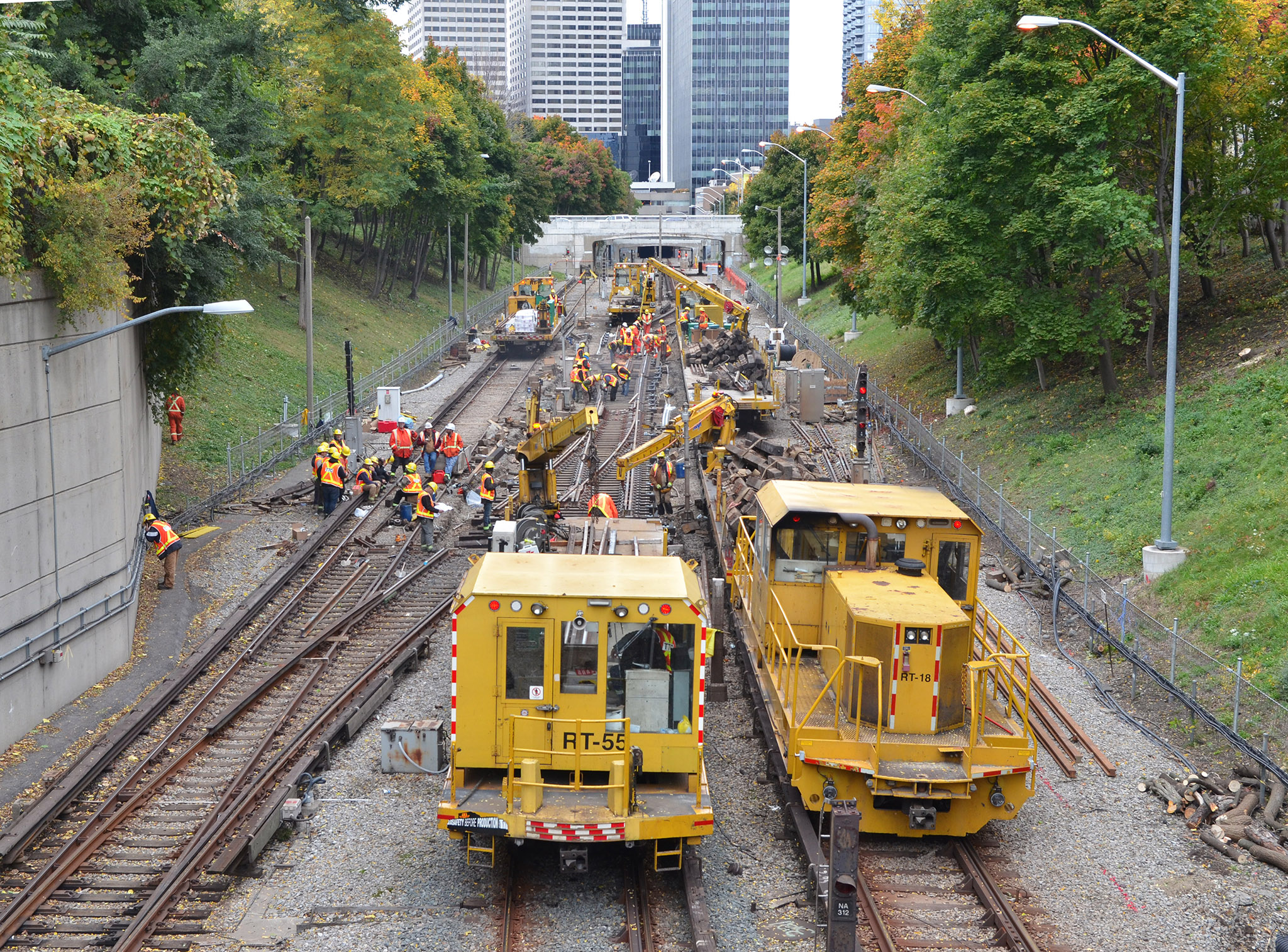steveintoronto
Superstar
Many thanks to @sunnyraytoronto for linking that string! https://urbantoronto.ca/forum/threads/leaside-bridge.19243/page-2 Even though it's 'a bridge too far', some of the comments at the string are excellent, but here's the most shocking point to be made: (the now projected passenger numbers per work week day)
diminutive said:
That figure, and that's just for up to Eglinton, almost matches the Yonge St portion of Line 1. I don't have a reference handy for that right now, but looked it up a few days back.
What that makes clear to me is that this must be built *heavier* than conventional subway, not lighter. This is RER capacity level. And London, Paris and other cities are building newer tech mainline trains that can run in subway size tunnel, run ATO, max speed up to 100 mph and are in operation as I type.
Ford and Fedeli have no idea of what they've released. Verster's comment can't be back-pedalled.
diminutive said:
The DRTES put peak demand in 2030 at 15k pphpd. That's easily met by ICTS scaled vehicles traveling at 90s headways.
Reintroducing LIMs probably wouldn't be a good idea, but any new route should designed to realize all of the cost savings possible. Things like running through a single tunnel, or tighter turn radii and grade allowances.
Also, economy of scale in rolling stock seems nonexistant in Toronto.
Verster has stated "400,000 per work-week day" at least twice here:I agree with this.
Currently, it seems we use this logic. DRL is needed. It should be subway. The way Toronto and TTC build subways, the cost is $450/km.
We have to include the ability to actually collect the money to get the project to actually proceed. The above scenario will have maybe a 25% chance of being started within 10 years. But if we cut costs by one of several means, we could get a cost of $200M/km and still have a grade-separated line. Sure the capacity is only 20 to 25k instead of 30 to 35k, but it still meets our needs. Also, the probability of recieving enough support for the project to actually begin within 10 years may increase to 75%.
Instead of trying to get a home run, we should settle for a double.
That figure, and that's just for up to Eglinton, almost matches the Yonge St portion of Line 1. I don't have a reference handy for that right now, but looked it up a few days back.
What that makes clear to me is that this must be built *heavier* than conventional subway, not lighter. This is RER capacity level. And London, Paris and other cities are building newer tech mainline trains that can run in subway size tunnel, run ATO, max speed up to 100 mph and are in operation as I type.
Ford and Fedeli have no idea of what they've released. Verster's comment can't be back-pedalled.

